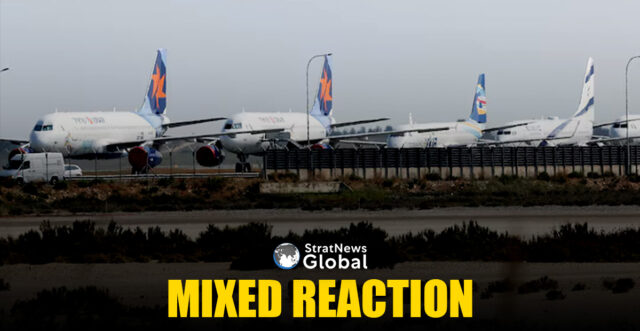Commercial airlines across the globe on Monday began reassessing the duration of their flight suspensions over the Middle East, as the regional conflict escalated following US strikes on key Iranian nuclear facilities and Tehran’s pledge to retaliate.
The usually busy airspace stretching from Iran and Iraq to the Mediterranean has been largely empty of commercial air traffic for 10 days since Israel began strikes on Iran on June 13, as airlines divert, cancel and delay flights through the region due to airspace closures and safety concerns.
Mixed Take
New cancellations of some flights by international carriers in recent days to usually resilient aviation hubs like Dubai, the world’s busiest international airport, and Qatar’s Doha, show how aviation industry concerns about the region have escalated.
However, some international airlines were resuming services on Monday.
Leading Asian carrier Singapore Airlines, which described the situation as “fluid”, was set to resume flying to Dubai on Monday after cancelling its Sunday flight from Singapore.
Similarly, Flightradar24 departure boards show British Airways, owned by IAG, was set to resume Dubai and Doha flights on Monday after cancelling routes to and from those airports on Sunday.
Air France KLM cancelled flights to and from Dubai and Riyadh on Sunday and Monday.
With Russian and Ukrainian airspace also closed to most airlines due to years of war, the Middle East had become a more important route for flights between Europe and Asia. Amid missile and air strikes during the past 10 days, airlines have routed north via the Caspian Sea or south via Egypt and Saudi Arabia.
Added to increased fuel and crew costs from these long detours and cancellations, carriers also face a potential hike in jet fuel costs as oil prices rise following the US attacks.
Airspace Risks
Proliferating conflict zones are an increasing operational burden on airlines, as aerial attacks raise worries about accidental or deliberate shoot-downs of commercial air traffic.
Location spoofing and GPS interference around political hotspots, where ground-based GPS systems broadcast incorrect positions which can send commercial airliners off course, are also a growing issue for commercial aviation.
Flightradar24 told Reuters it had seen a “dramatic increase” in jamming and spoofing in recent days over the Persian Gulf. SkAI, a Swiss company that runs a GPS disruption map, late on Sunday said it had observed more than 150 aircraft spoofed in 24 hours there.
Safe Airspace, a website run by OPSGROUP, a membership-based organisation that shares flight risk information, noted on Sunday that US attacks on Iran’s nuclear sites could heighten the threat to American operators in the region.
This could raise additional airspace risks in Gulf states like Bahrain, Kuwait, Oman, Qatar, Saudi Arabia and the United Arab Emirates, it said.
Precaution
In the days before the US strikes, American Airlines suspended flights to Qatar, and United Airlines and Air Canada did the same with flights to Dubai. They have yet to resume.
While international airlines are shying away from the region, local carriers in Jordan, Lebanon and Iraq are tentatively resuming some flights after widespread cancellations.
Israel’s Increased Flight Operation
Israel is ramping up flights to help people return home, and leave. The country’s Airports Authority says that so-called rescue flights to the country would expand on Monday with 24 a day, although each flight would be limited to 50 passengers.
From Monday, Israeli airlines will start to operate outbound flights from Israel, the authority said.
Israeli airline El Al on Sunday said it had received applications to leave the country from about 25,000 people in about a day.
(With inputs from Reuters)





